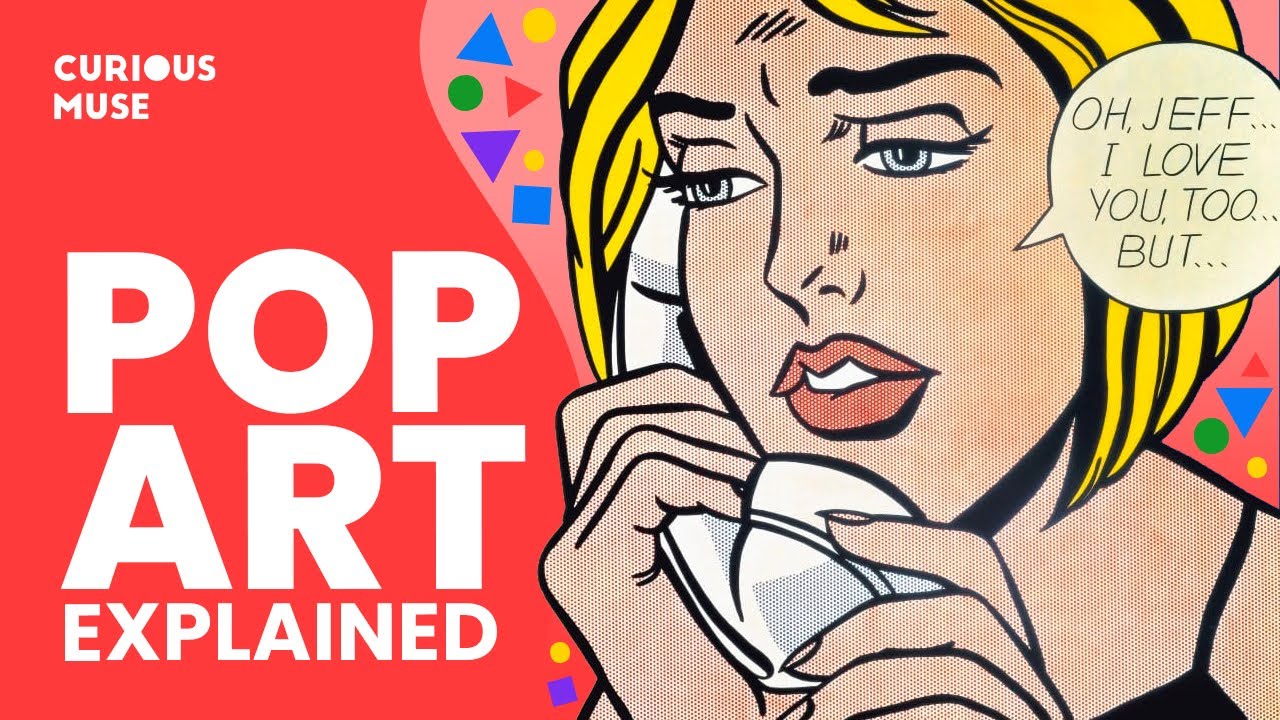What is Pop Art?
Summary
TLDRPop art is an influential art movement that emerged in the 1950s, characterized by vibrant colors and the incorporation of popular culture imagery. As a reaction to abstract expressionism, it aimed to make art accessible to everyday people, challenging elitist notions. Key principles include blurring the lines between high and low art, exploring themes like consumerism and celebrity, and often incorporating text for deeper meaning. Notable artists like Andy Warhol, Roy Lichtenstein, and Claes Oldenburg played pivotal roles in shaping the movement, each bringing unique perspectives on mass culture and art.
Takeaways
- 🎨 Pop art emerged in the 1950s and is characterized by bright colors and imagery from popular culture.
- 📺 The movement often references commercial images and objects, including trademarks, advertising, and comic strips.
- 💥 Pop art was a reaction against abstract expressionism, aiming to make art more accessible to the everyday person.
- 🌍 It sought to redefine what art could be by using popular culture as its inspiration.
- 📉 Pop art rejected the elitist notion of art, making it relevant to people's everyday lives.
- ⚖️ One of its main principles is breaking down the barriers between high art and low art.
- ⭐ Common themes in pop art include celebrities, advertising, comic books, and everyday objects.
- 🖊️ Text and words are often incorporated into pop art to add meaning or commentary on the subject matter.
- 👨🎨 Key figures in the pop art movement include Andy Warhol, Roy Lichtenstein, and Claes Oldenburg.
- 🥣 Andy Warhol is famous for his Campbell's Soup cans and Marilyn Monroe prints, making a significant impact on the era of pop art.
Q & A
What is pop art?
-Pop art is an art movement that emerged in the 1950s, characterized by its use of bright colors and imagery from popular culture.
How did pop art respond to previous artistic movements?
-Pop art was a reaction to abstract expressionism and minimalism, aiming to redefine what art could be by incorporating elements from popular culture.
What themes are commonly explored in pop art?
-Common themes in pop art include consumerism, celebrities, advertising, comic books, and everyday objects.
What is a key principle of pop art?
-A key principle of pop art is to break down the barriers between high art and low art, elevating popular culture to the level of fine art.
Who are some prominent artists associated with the pop art movement?
-Prominent artists include Andy Warhol, Roy Lichtenstein, and Claes Oldenburg.
What are Andy Warhol's notable contributions to pop art?
-Andy Warhol is known for his iconic works such as Campbell's Soup cans and Marilyn Monroe prints, which are highly influential in the pop art movement.
How did Roy Lichtenstein's work reflect pop art characteristics?
-Roy Lichtenstein was known for his comic book-style paintings that incorporated imagery and themes from popular culture.
What role does text play in pop art?
-Text in pop art often serves to add commentary on the subject matter or provide an additional layer of meaning to the artwork.
What was the cultural context for the emergence of pop art in the 1950s?
-The emergence of pop art in the 1950s coincided with a renewed interest in traditional art forms, leading to various artistic movements and a reaction against elitist art.
How does pop art challenge consumerism?
-Pop art often critiques consumerism by using elements of mass culture in a new and exciting way, inviting viewers to reflect on its impact on society.
Outlines

This section is available to paid users only. Please upgrade to access this part.
Upgrade NowMindmap

This section is available to paid users only. Please upgrade to access this part.
Upgrade NowKeywords

This section is available to paid users only. Please upgrade to access this part.
Upgrade NowHighlights

This section is available to paid users only. Please upgrade to access this part.
Upgrade NowTranscripts

This section is available to paid users only. Please upgrade to access this part.
Upgrade Now5.0 / 5 (0 votes)





